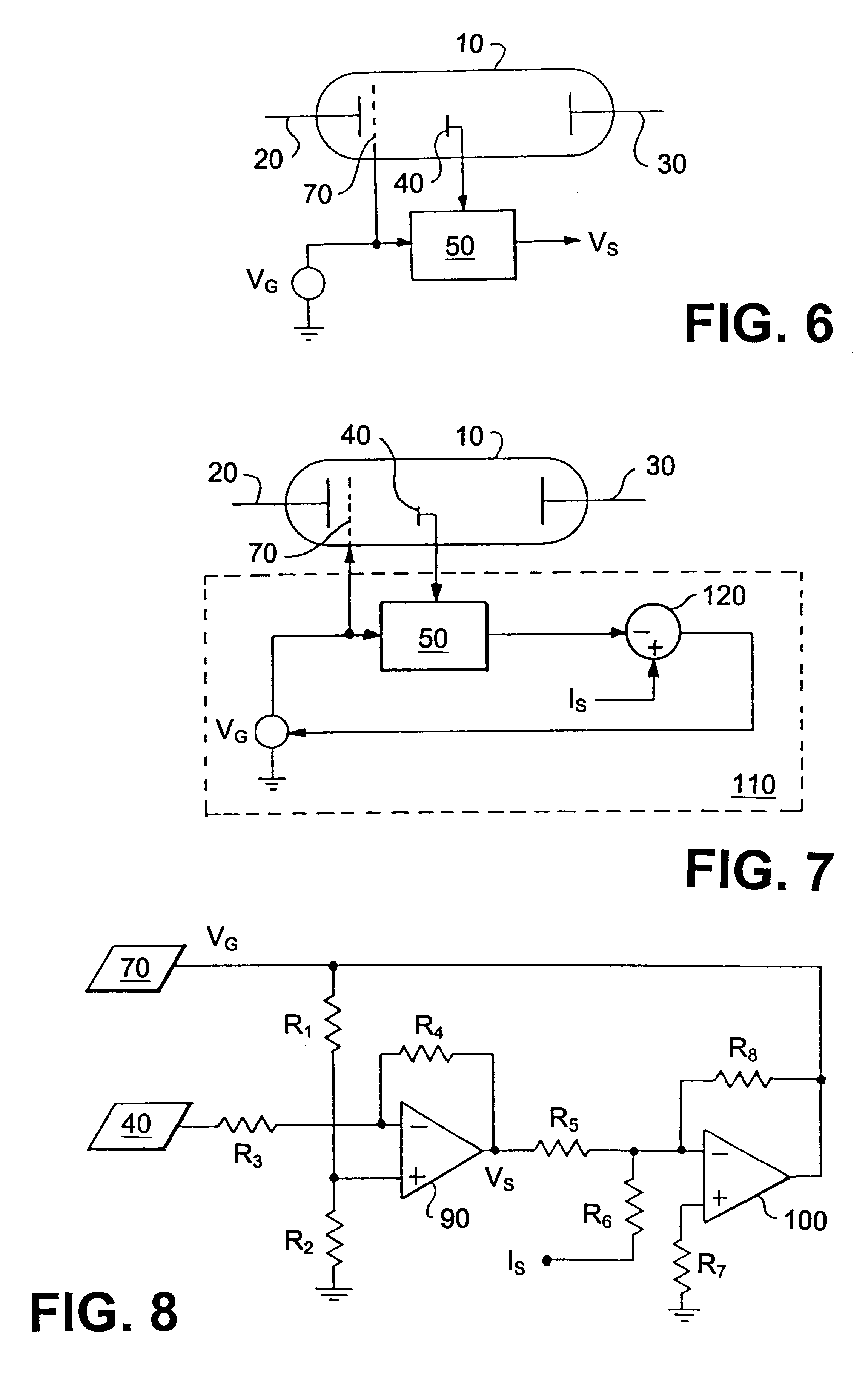Current sensing in vacuum electron devices
a vacuum electron and current sensing technology, applied in the field of vacuum electron devices, can solve the problem that the technique is not suitable for controlling individual beam current in such a devi
- Summary
- Abstract
- Description
- Claims
- Application Information
AI Technical Summary
Problems solved by technology
Method used
Image
Examples
Embodiment Construction
Referring to FIG. 1, an example of a simple vacuum electron device is a diode comprising an evacuated tube 10 containing an anode 30 and a cathode 20. In operation, the anode 30 is held at a potential greater than or equal to that applied to the cathode 20. Electrons released from the cathode 20 thus pass through the evacuated tube 10 to the anode 30. The anode current is defined by the number of electrons striking the anode 30.
The current flowing in the diode may be determined by measuring the current flowing into the cathode 20. A disadvantage with this approach is that the cathode may not be 100 percent efficient in electron conversion. Also, there is no certainty that all electrons leaving the cathode 20 will inevitably strike the anode.
The current flowing in the diode may alternatively be determined by measuring the current flowing from the anode 30. This approach is practical provided that the entire anode current is carried in a single electron beam. If the anode current is d...
PUM
 Login to View More
Login to View More Abstract
Description
Claims
Application Information
 Login to View More
Login to View More - R&D
- Intellectual Property
- Life Sciences
- Materials
- Tech Scout
- Unparalleled Data Quality
- Higher Quality Content
- 60% Fewer Hallucinations
Browse by: Latest US Patents, China's latest patents, Technical Efficacy Thesaurus, Application Domain, Technology Topic, Popular Technical Reports.
© 2025 PatSnap. All rights reserved.Legal|Privacy policy|Modern Slavery Act Transparency Statement|Sitemap|About US| Contact US: help@patsnap.com



